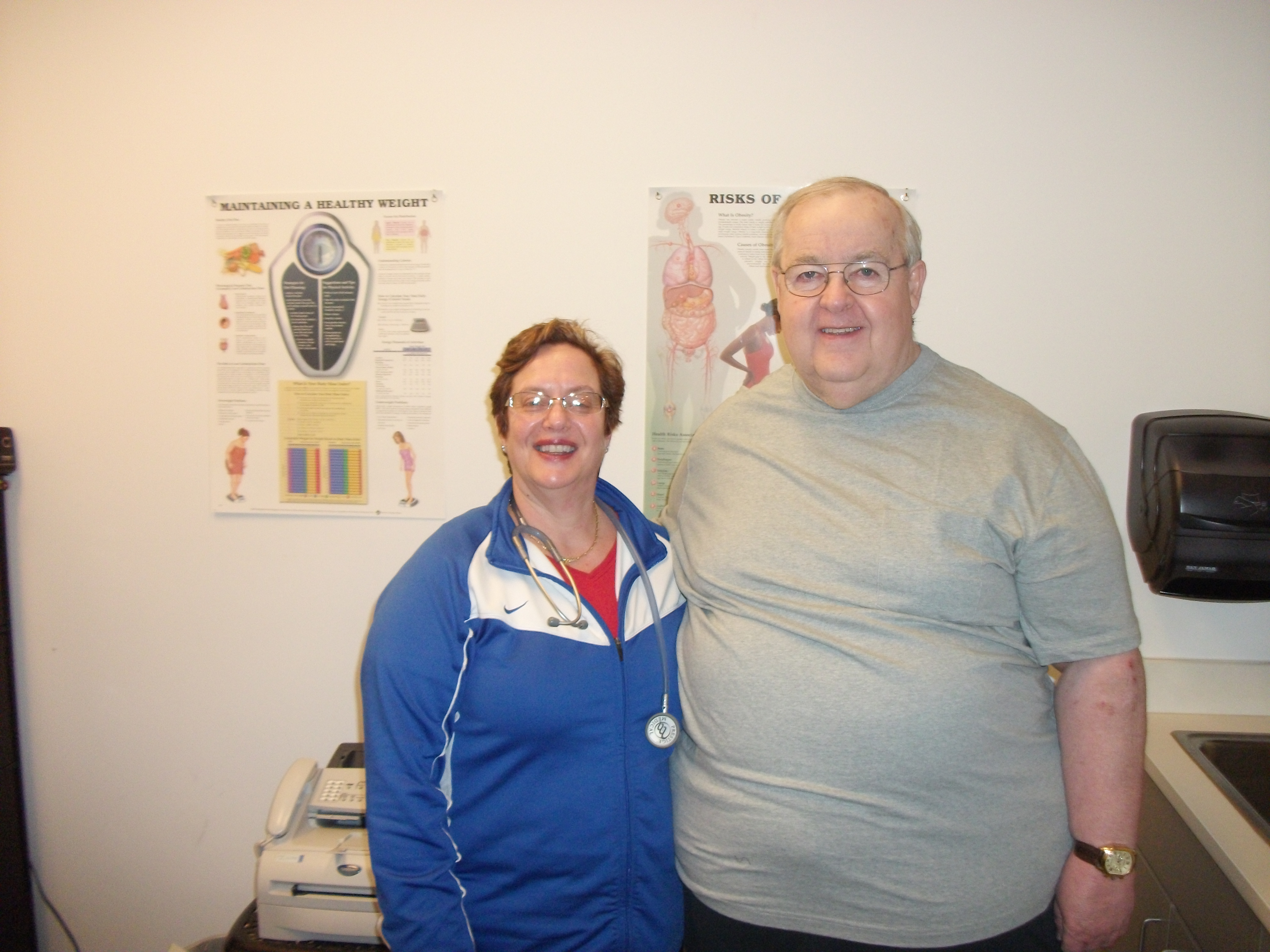by Michelle Sutton-Kerchner
One out of every 1,000 Americans develops deep vein thrombosis (DVT). This blood-clotting disorder can lead to dangerous health complications. Learn ways to prevent blood clots, and how to respond if one occurs. Member Ed shares his lifesaving story …
Healthy blood flow is vital for our well-being. A variety of causes may trigger a blood clot to form in one of the body’s deep veins, often in the legs or pelvic area. This condition is known as deep vein thrombosis (DVT). Its formation is not always apparent. However, its risks are. Left untreated, it can evolve into a life-threatening pulmonary embolism, when whole or part of the clot breaks off and travels back to the lungs. Blood clots can also form in other areas of the body, such as heart or carotid arteries (found in the neck), which may result in a heart attack or stroke, respectively.
Beware of a Blood Clot in Disguise
As always, it’s easier to prevent than treat. Member Ed Erlenmeyer discovered this firsthand during a routine stop at the Center nurse’s office. Ed regularly uses the Center’s electronic scale to check his weight, and enjoys the motivating support the Center nurses offer. During a recent weight check, he mentioned a possible muscle strain in his leg to Nursing Manager Harlene Goldberg.
Ed’s sore, swollen leg signaled more than a pulled muscle to Harlene. After examining and measuring the area, she immediately arranged for Ed to visit the hospital Emergency Department (ED). Ed’s right leg was two inches bigger in circumference than his left. This painful swelling is a key indicator of blood clots. Indeed, the ED physicians diagnosed his leg as having a severe blood clot.

“If it weren’t for Harlene’s keen perception, I may never have bothered to investigate this issue,” he admits. “The consequences could have been dire. Harlene’s analysis and recommendation may have saved my life,” Ed emphasizes.
He notes Harlene’s “sense of urgency” put this issue in perspective. Ed’s leg had gotten worse a few days prior to his passing-mention to Harlene. He tried to “work it out on his own” during his exercise routine. In retrospect, he admits that wasn’t the approach to take. “Luckily, Harlene made me realize the seriousness and timeliness of my situation.” Ed postponed a road trip to Florida scheduled to occur four days after this discovery. Extensive time in the car with an undetected clot could have been life-threatening.
Prevention Is the Best Intervention
Know the causes, recognize the symptoms, and take proactive measures to keep your blood pumping freely.
Exercise: Sitting still at length increases your risk for DVT. This includes jobs that require stationary positions, extended seated travel, and being bedridden (such as during a hospital stay). Health experts cite mobility as the best form of prevention. Simple exercises done throughout the day can prevent blood from stagnating in the veins. Take brief breaks to increase circulation and stimulate leg muscles. In addition to preventing blood clots, you’re also improving overall health. (See “Give Up Your Seat” at www.fitnessandwellnessnews.com/health/give-up-your-seat)
Speak with a personal trainer or Group Fitness instructor to learn simple, quick ways to add movement to everyday life, whether at your desk, in your car, or laid-up from an injury. Some recommendations include:
- Tighten calves for 15 seconds each by flexing your feet.
- Turn ankles clockwise and counterclockwise while holding them above the floor.
- Roll your shoulders.
- Stretch your neck. Avoid rolling your neck. (Rolling is unrelated to blood clots; it’s just a detrimental way to stretch.) Instead, slowly look side to side, followed by up and down.
- Lift your feet from the floor, alternate raising the balls of your feet and the heels.
- Sit with feet flat on the floor, legs uncrossed. If you habitually cross your legs, try just crossing at the ankles.

While at the Center, enjoy a water workout. Stressful pounding and thrusting is eliminated during swimming and other aquatic exercises. Benefit from a cardio and strengthening workout without strenuous impact. This decreases chance of trauma to legs that are prone to, or already house, clots. A stint on the treadmill is another great option for those susceptible to blood clots. You can increase the intensity without the jostling terrain issues found outdoors.
Exercise also helps maintain a healthy weight, another factor in preventing DVT.
Dress for Success: Most of us throw on typical workout gear without a thought. Note if your clothing is restrictive. You may be stylin’ in those biker shorts or tight tanks, but you could also be clotting. Whether dressing for the Center or the office, pay attention to what you wear. Another strike against those uncomfortable dress socks, knee highs, and pantyhose! If you suffer from blood clots or have a family history of DVT, consider wearing compression socks. Sold with healthcare items, these encourage circulation by putting pressure on the calves.
Drink Your Water: Dehydration creates the perfect environment for developing a blood clot. Alcohol and caffeinated beverages contribute to dehydration so consume in moderation, and follow with equal amounts of water.
Don’t Postpone Well-Visits: Even healthy individuals should have an annual exam. Find a physician with whom you feel comfortable so that open dialogue is easy and helpful. Discuss predispositions to blood clotting disorders, including family history, as well as other health conditions.
Maintain a Healthy Weight: Extra pounds put unnecessary pressure on veins, particularly in your pelvis and legs. There are an abundance of reasons to avoid becoming overweight, DVT is yet another. Obesity is a major risk factor. Take dietary and fitness measures to reach and maintain a healthy weight.
A study published in the journal Arteriosclerosis, Thrombosis and Vascular Biology revealed that tall men are 2.6 times more at risk for dangerous blood clots. Tall men who are obese are over five times more likely than short, healthy-weight men. One theory blames blood having to be pumped a longer distance by the calf muscle, which reduces the flow in the legs and increases the risk of clot formation.

Simple logic is also revealing: Even the shortest among us can get cramped in public seating situations. It’s more so for a tall person, causing higher risk of clot development. (Think: airplane seats at four-hour intervals. Leg claustrophobia!)
Are You at Risk?
Knowledge is power. Instead of being fearful, take action. Ignorance is never bliss when a silent clot could be forming. Often, timeliness is essential to avoid severe consequences. The following factors may increase your likelihood of blood clots:
- Obesity
- Over 40 years of age
- Recent surgery or hospitalization
- Cancer treatments
- Certain medications (Talk with your physician about prescription risks.)
- Family or personal history of DVT
- Immobilization (either through lifestyle or health issues)
- Cigarette smoking
- Pregnancy
- Oral contraception
- Hormone therapy
- Being tall
If any of these apply to you, be extra diligent in following preventative measures.
Ed shares advice, “Listen to your body. Ask questions. The Center’s nurses are a valuable resource. Check with them when something feels wrong. Then, follow their advice. They not only do their job; they do it well.”
Sources
“Blood Clots,” at www.mayoclinic.com.
“Deep Vein Blood Clots More Common in Tall, Obese Men,” by David W. Freeman at www.cbsnews.com.
“Get Moving, Prevent DVT,” by Sarah Biason at www.everydayhealth.com.
“10 Ways to Prevent Deep Vein Thrombosis,” by Jen Laskey at www.everydayhealth.com.
Image Credits
Walking sign (introductory photo): www.photoeverywhere.co.uk/britain/snowdonia/slides/walking_sign4517.html
Airplane seats: www.flickr.com/photos/randomecho/246401905
 Fitness & Wellness News Your Source for Fitness News, Wellness News, Health News, and Nutrition News!
Fitness & Wellness News Your Source for Fitness News, Wellness News, Health News, and Nutrition News!



